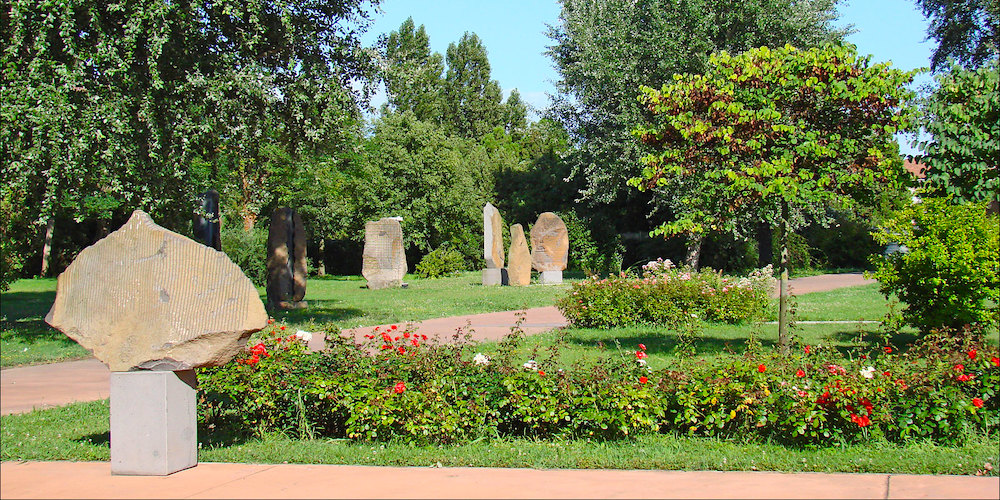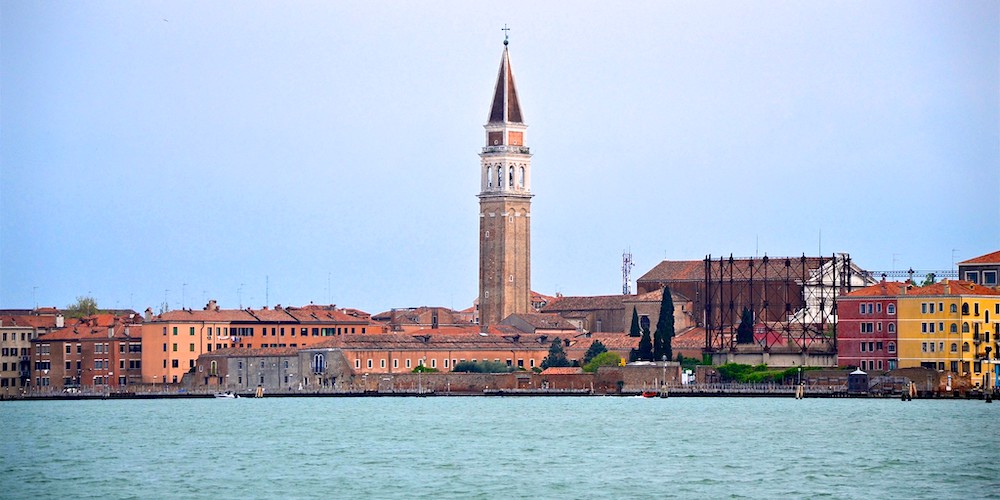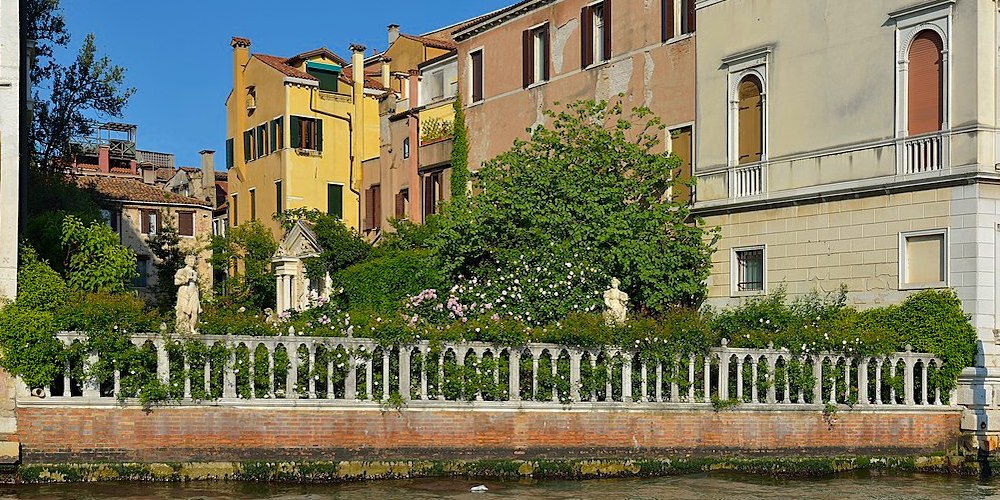When you think of Venice surely the first image that comes to your mind is that of historic buildings overlooking the canals, and not of lush gardens. Venice is definitely not known for its huge parks, yet in the city there are more than 500 gardens. Surprising, isn't it? Behind the majestic facades of noble palaces there are hidden wonderful secret gardens and also cloisters of ancient convents, vegetable gardens and rose gardens cared for by cloistered nuns, ancient vineyards, labyrinths and lovely public parks. These green areas are enchanting places rich in history and today we will discover 10 of these secret gardens hidden among the streets of Venice.
The Thetis Garden

In the Castello district, the least visited of the city, there are several public gardens, which are some of the best known in Venice, such as the Giardini della Biennale, but also small secret oasis. In one of the basins of the Arsenale there is a green space belonging to the company Thetis, active for years in the promotion of contemporary art. The Thetis garden, seat of exhibitions and shows, is a lush green area in which the works of famous contemporary artists stand out, among which "Pietre sonore" by Pinuccio Sciola and "The man who measures the clouds" by Jan Fabre.
Serra dei Giardini

Moving southwards, along the tree-lined avenue Giuseppe Garibaldi, in an area that was part of the original layout of the Biennale, we will find a magical place: the Serra dei Giardini. Known historically as Serra Margherita, this Art Nouveau tepidarium was built in 1894 to house the palms and other exotic plants that were used for decorating the International Art Exhibition of that year. After falling into disuse in the early '90s, in 2006, thanks to the restoration carried out by the City of Venice, the greenhouse has returned to its former glory and now houses a flower store and a small cafeteria, also used for various educational and cultural activities.
Gardens and cloisters of San Francesco della Vigna

Moreover in the Castello district, near the Church of San Francesco della Vigna, there are still present the ancient vegetable gardens cultivated by the Franciscan friars who lived in the original convent that was located in that area. Today these green areas are managed by the Order of Friars Minor, where the predominant cultivation is the vineyard, as suggested by the name of the church (vigna in Italian means vineyard). The vegetable gardens of this convent certainly represent a secret silent oasis that is worth a visit.
The Mystical Garden of the Discalced Carmelites
Another garden hidden within the walls of an ancient convent is the Mystical Garden of the Discalced Carmelites, in the Cannaregio district, near the Santa Lucia train station. Since 2015, after a careful restoration, the garden has reopened to the public. The aim of this green treasure is to safeguard the lagoon biodiversity, and today the garden is divided into seven thematic areas, including one dedicated to the cultivation of medicinal herbs, the heart of the production of the Venetian Discalced Carmelites' Acqua di Melissa (Carmelite Water) since 1700.
The Garden of the Grimani ai Servi Palace
Behind the walls of a simple palace that stands where once there was the noble Grimani ai Servi Palace, along the Fondamenta Grimani in Cannaregio, there is an enchanting sixteenth-century garden. In the center of the garden, there is a small fountain surrounded by a circular boxwood labyrinth that encloses a splendid rose garden.
The Garden of the Morosini Palace
Another secret green corner, hidden among the calli in Cannaregio, is the garden of the Morosini dal Giardin Palace. The name is due to the family that lived in the palace adjacent to the garden in 1600, the Morosini family, who, due to the fame of their beautiful garden, took the name "dal Giardin" ("from the garden"). Today the garden is cared for by a community of Dominican nuns and has a varied vegetation: varieties of flowers bloom among the vegetable gardens and fruit trees.
The Garden of the Patriarchal Seminary
Adjacent to the Basilica della Salute stands the Patriarchal Seminary of Venice, which hides a small treasure inside: the Roseto del Silenzio (Rose garden of the silence). The garden, created as a place of recreation for the students of the seminary, is divided into several flower beds that contain different varieties of antique roses.
The Borges Labyrinth

On the San Giorgio Maggiore island there is one of the most beautiful parks in Italy: the Borges Labyrinth. Realized as a tribute to the great Argentine writer 25 years after his death, the labyrinth, a space of 2,300 square meters, with over three thousand boxwood plants about 90 cm high, is a true "green masterpiece".
The Royal Gardens

Near San Marco, there are the majestic Royal Gardens, that reopened to the public in December 2019. The origins of the Royal Gardens date back to the Napoleonic reform project of the Marciana Area, and after years of changes of ownership the use of the gardens changed radically after the First World War when they were assigned to the City of Venice and entirely open to the public. Unfortunately, during the recent decades the gardens were in a state of neglect due to the lack of the necessary maintenance, so in 2014 they closed to be renovated. After the renovation, the gardens have regained the form and the botanical complexity of the original nineteenth-century project.
The Garden of the Malipiero Palace

The last secret garden we present you is the one of the Malipiero Palace. Located in the sestiere of San Marco, this lush green oasis overlooks the Grand Canal and is characterized by a rich statuary decoration and an infinite variety of roses. The central point of the garden coincides with the fountain representing the Nymphaeum of Hercules.










Lascia un commento